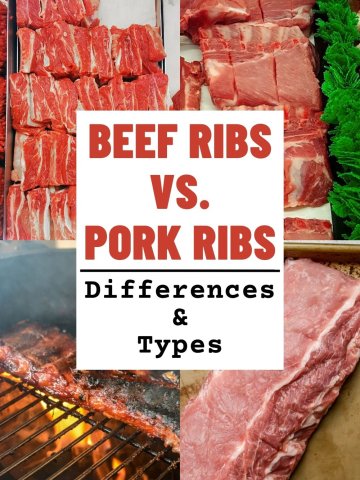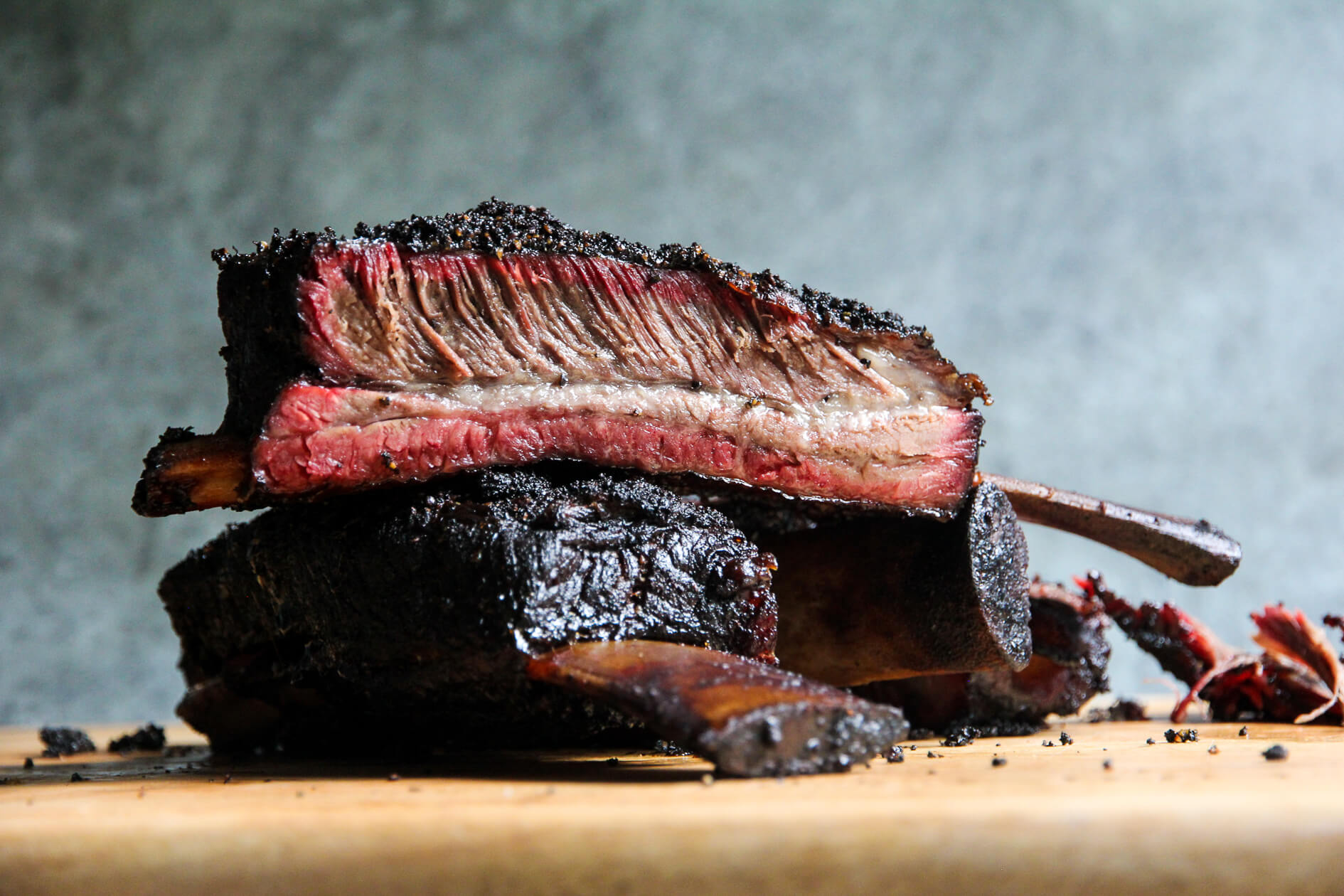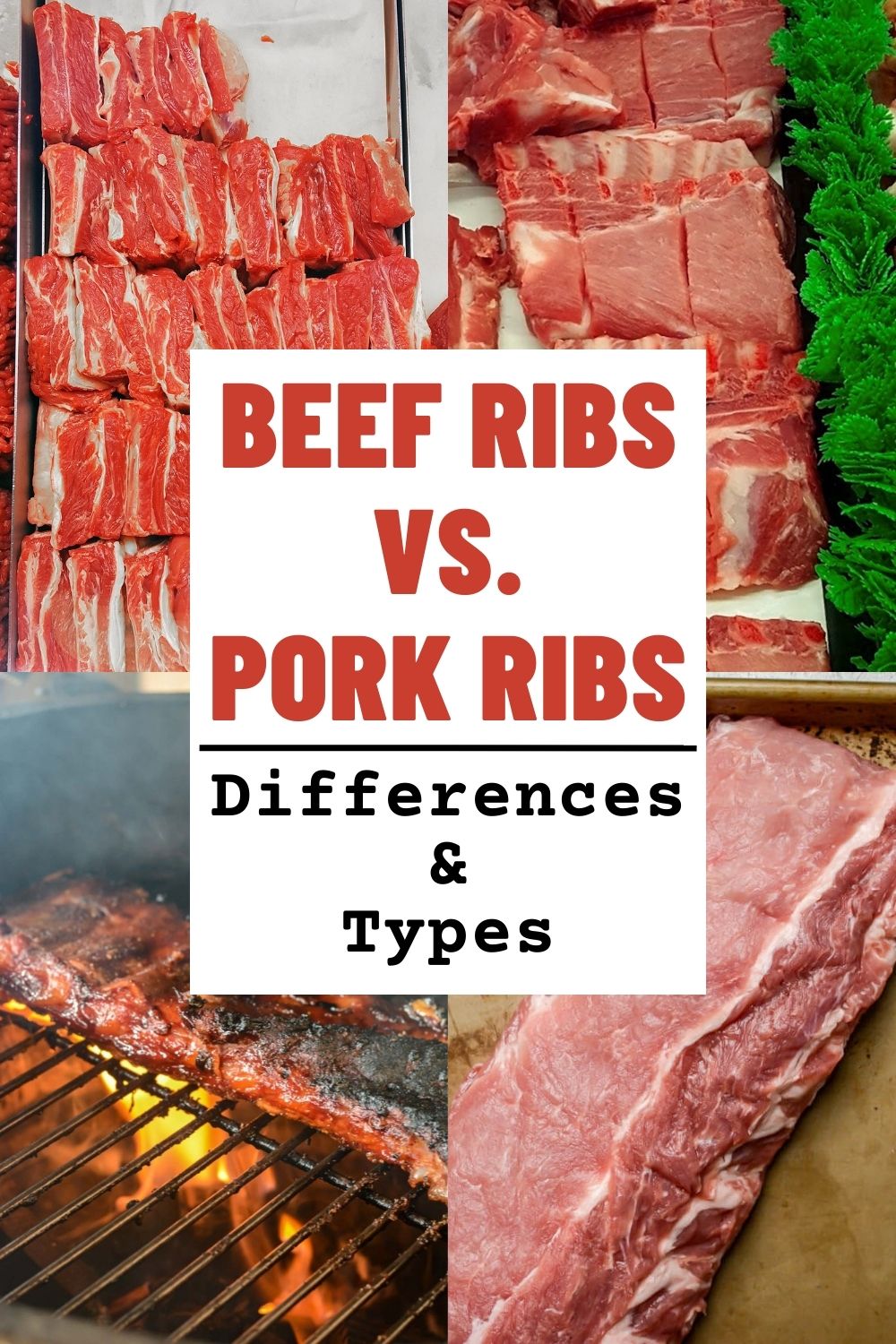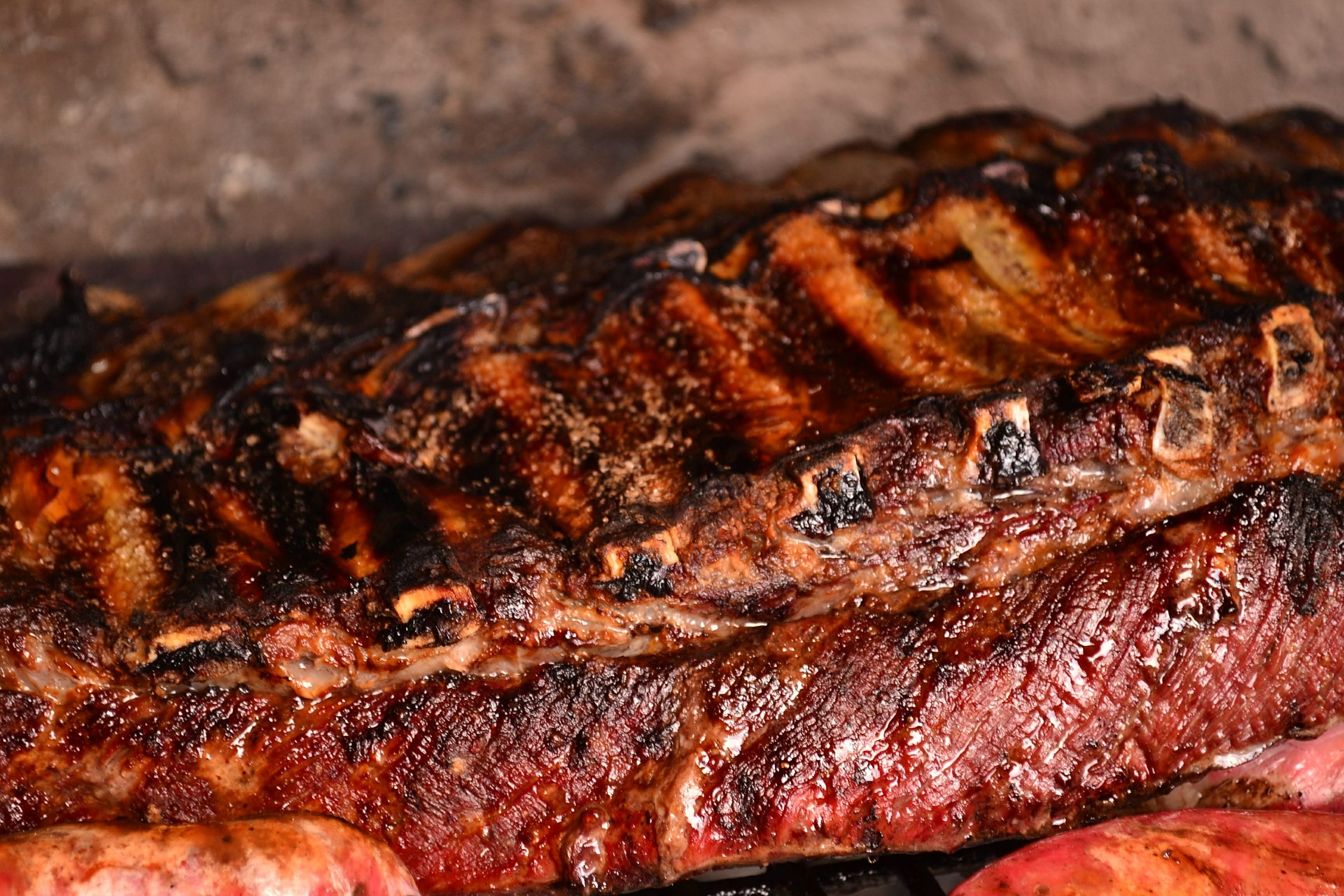Introduction

In the world of BBQ, the battle between beef and pork ribs has long been a topic of debate. Both meats offer unique characteristics and flavors that can make it difficult to choose which one to indulge in. In this article, we will explore the factors to consider when deciding between beef and pork ribs, including the different types and characteristics of each. Additionally, we will delve into the nutritional comparison, flavor profiles, and cooking methods for both beef and pork ribs. By the end, you’ll have a better understanding of which meaty delight suits your taste buds best.
Overview Of Beef Vs Pork Ribs Debate
The debate between beef and pork ribs has long been a source of contention among BBQ enthusiasts. Beef ribs are known for their robust flavor and tenderness, while pork ribs offer a slightly sweeter taste and a juicier texture. The choice between the two ultimately comes down to personal preference and the desired flavor profiles. Some argue that beef ribs are superior due to their rich marbling and intense beefy flavor, while others believe that pork ribs have a better balance of fat and meat, resulting in a more succulent and versatile option. Ultimately, the battle between beef and pork ribs is one that can only be settled by individual taste buds.
Factors To Consider When Choosing Between Beef And Pork Ribs
There are several factors to consider when choosing between beef and pork ribs. One important factor is the flavor profile. Beef ribs are known for their robust and intense flavor, while pork ribs offer a slightly sweeter taste. Another factor to consider is texture. Beef ribs are typically more tender and have a richer mouthfeel, while pork ribs are juicier and have a more succulent texture. Additionally, personal preference and cooking methods play a role. Beef ribs are often smoked or slow-cooked, while pork ribs are commonly grilled or braised. Ultimately, the decision comes down to individual taste and desired cooking techniques.
Beef Ribs

Beef ribs are well-known for their flavorful and meaty characteristics. They come in various types, such as the popular beef back ribs or the mouthwatering beef short ribs. These ribs are typically larger and have a rich, robust flavor. The best cooking methods for beef ribs include slow cooking or smoking, which allows the meat to become tender and juicy. Some recommend using a dry rub or marinating the ribs before cooking to enhance the flavor even further. Beef ribs are a delicious choice for those who enjoy a hearty and satisfying meaty experience.
Beef Ribs: Types And Characteristics
Beef ribs come in various types, each with its own unique characteristics. The popular beef back ribs are cut from the prime rib section and are known for their tenderness and rich marbling. On the other hand, beef short ribs are cut from the plate section and have a meaty texture with plenty of flavor. These ribs can be bone-in or boneless, and their size can vary depending on the cut. Regardless of the type, beef ribs offer a robust and savory taste that meat lovers crave.
Best Cooking Methods For Beef Ribs
When it comes to beef ribs, there are several cooking methods that can result in mouth-watering flavor and tender meat. One popular method is slow smoking the ribs, which allows the meat to become tender while also infusing it with a smoky flavor. Another option is braising the beef ribs, which involves cooking them in a flavorful liquid until they are fall-off-the-bone tender. Grilling the ribs is also a great choice, as it can create a charred and slightly crispy exterior with a juicy interior. Ultimately, the best cooking method for beef ribs depends on personal preference and desired flavor profile.
Pork Ribs

Varieties and flavors
Pork ribs come in various cuts, including baby back ribs and spare ribs. Baby back ribs are shorter and meatier, with a tenderness that is favored by many. Spare ribs, on the other hand, are larger and have more connective tissue, resulting in a more intense flavor. Pork ribs have a slightly sweeter taste compared to beef ribs, making them a popular choice for those who enjoy a hint of sweetness in their BBQ. Additionally, pork ribs can be cooked with a variety of seasonings and marinades to enhance the flavor even further.
Pork Ribs: Varieties And Flavors
Pork ribs come in various cuts, including baby back ribs and spare ribs. Baby back ribs are shorter and meatier, while spare ribs are larger and have more connective tissue, resulting in a more intense flavor. Pork ribs have a slightly sweeter taste compared to beef ribs, making them a popular choice for those who enjoy a hint of sweetness in their BBQ. Additionally, pork ribs can be cooked with a variety of seasonings and marinades to enhance the flavor even further.
Recommended Seasoning And Marinades For Pork Ribs
When it comes to enhancing the flavor of pork ribs, there are endless options for seasoning and marinades. Some popular choices include a classic barbecue rub, which typically consists of a blend of spices like paprika, brown sugar, garlic powder, and black pepper. For those who prefer a savory and tangy flavor, a marinade with ingredients like soy sauce, Worcestershire sauce, and vinegar can do the trick. If you’re looking to add a kick of heat, consider using a spicy dry rub or a marinade with chili powder, cayenne pepper, or hot sauce. Remember to let the ribs marinate for at least a few hours or overnight to allow the flavors to penetrate the meat.
Nutritional Comparison

When it comes to the nutritional content, there are some differences between beef ribs and pork ribs. Beef ribs tend to have a higher calorie count, more protein, and a higher amount of iron compared to pork ribs. The higher fat content in beef ribs can contribute to their increased calorie count. On the other hand, pork ribs may have a slightly lower calorie count but contain higher levels of vitamin B6 and vitamin B12. It’s important to note that the nutritional value can vary based on the cut of meat and cooking method used.
Nutritional Value Of Beef Ribs Vs Pork Ribs
When comparing the nutritional value of beef ribs and pork ribs, there are some differences to consider. Beef ribs tend to have a higher calorie count, with approximately 230 calories in three ounces, while pork ribs contain slightly more calories at around 250 calories. In terms of protein content, beef ribs come out on top, providing more protein per serving. Additionally, beef ribs have a higher amount of iron compared to pork ribs. It’s important to note that the nutritional values may vary based on the specific cut of meat and cooking method used.
Health Benefits And Concerns Associated With Each Meat
Beef and pork ribs have their own unique health benefits and concerns. Beef ribs are a good source of high-quality protein, which is essential for muscle growth and repair. They also contain important nutrients such as iron, zinc, and B vitamins. However, beef ribs can be higher in saturated fat and cholesterol, which may increase the risk of heart disease if consumed in excess. On the other hand, pork ribs are relatively lower in saturated fat and cholesterol, but they still provide protein and essential nutrients. It’s important to balance your consumption of both meats and choose lean cuts whenever possible.
Flavor And Texture

When it comes to flavor and texture, beef ribs and pork ribs have distinct characteristics. Beef ribs are known for their rich, hearty flavor and meaty texture. The meat is tender, succulent, and has a satisfying chew. Additionally, the marbling of fat in beef ribs adds to the overall juiciness and flavor. On the other hand, pork ribs offer a slightly sweet and more delicate flavor. The meat is tender and has a more fall-off-the-bone texture, making it incredibly enjoyable to eat. Whether you prefer the robustness of beef or the tenderness of pork, both options provide a delectable and satisfying dining experience.
Flavor Profile And Texture Of Beef Ribs
Beef ribs are known for their rich, hearty flavor and meaty texture. The flavor profile of beef ribs is robust and savory, with a hint of natural sweetness. The meat is tender and succulent, with a satisfying chew that is sure to please any meat lover. The marbling of fat in beef ribs adds to the overall juiciness and flavor, enhancing the eating experience. Whether you opt for short ribs or beef back ribs, the flavor and texture of beef ribs are sure to leave a lasting impression.
Flavor Profile And Texture Of Pork Ribs
Pork ribs offer a delightful flavor profile and texture that is distinct from beef ribs. The meat of pork ribs is tender, juicy, and slightly sweeter compared to beef. It has a melt-in-your-mouth quality that is truly satisfying. The flavor of pork ribs is often described as milder, allowing the seasonings and marinades to shine through. The texture of pork ribs is less dense than beef ribs, with a tender bite that complements the succulent meat. Overall, pork ribs provide a delicious combination of sweet and savory flavors with a tender and juicy texture.
Conclusion

In conclusion, the debate between beef and pork ribs ultimately comes down to personal preference and taste. Both beef and pork ribs offer unique qualities that can satisfy even the most discerning barbecue enthusiast. Beef ribs are known for their meaty and robust flavor, while pork ribs are lauded for their tender and juicy texture. Whether you prefer the boldness of beef or the succulence of pork, experimenting with different cuts and cooking methods can help you find the perfect rib experience. So fire up the grill, grab your favorite barbecue sauce, and enjoy the deliciousness of ribs, regardless of which meat you choose.
Final Thoughts On Choosing Between Beef Ribs And Pork Ribs
When it comes to choosing between beef ribs and pork ribs, it ultimately boils down to personal preference and taste. Both cuts offer their own unique qualities and flavors. Beef ribs have a meatier and more robust flavor, while pork ribs are known for their tenderness and juiciness. Some may prefer the boldness of beef, while others may enjoy the succulence of pork. The best way to decide is by experimenting with different cuts and cooking methods to find the perfect rib experience that satisfies your palate. Regardless of your choice, both beef and pork ribs are sure to bring deliciousness to your plate.
Tips For Enjoying Ribs At Home And Dining Out
When it comes to enjoying ribs at home, one tip is to marinate the meat overnight to enhance the flavor and tenderness. Additionally, slow-cooking the ribs in the oven or on the grill can result in fall-off-the-bone goodness. For those dining out, consider trying different BBQ restaurants that specialize in ribs to taste a variety of flavors and cooking styles. Don’t be afraid to ask the server for recommendations or try different types of sauces to enhance your rib-eating experience. So whether it’s in the comfort of your own home or at a restaurant, savor every delicious bite of these meaty delights.
FAQ About Beef Vs Pork Ribs: Deciding The Meaty Battle
Q: What are the main differences between beef and pork ribs?
A: The main difference lies in the type of meat as beef ribs come from cows, and pork ribs come from pigs. Beef ribs are typically larger and meatier with a rich flavor, while pork ribs are smaller and more tender, offering a sweeter taste.
Q: Which type of ribs is usually more tender?
A: Pork ribs are generally more tender compared to beef ribs due to the higher fat content in pork meat. This results in a juicier and more succulent eating experience.
Q: What are the best cooking methods for beef and pork ribs?
A: Beef ribs are often best suited for low and slow cooking methods such as smoking or braising to break down the tougher meat fibers. Pork ribs, on the other hand, can be cooked using various methods including grilling, roasting, or slow cooking.
Q: Are there any health considerations when choosing between beef and pork ribs?
A: Pork ribs are higher in fat content than beef ribs, so if you’re watching your fat intake, beef ribs might be a better option. However, both types of ribs can be enjoyed in moderation as part of a balanced diet.
Q: Which type of ribs is more popular in certain cuisines?
A: Pork ribs are more commonly used in barbecue and Asian cuisines, while beef ribs are often featured in American and Texan barbecue traditions. The choice between beef and pork ribs often comes down to personal preference and regional culinary influences.
Q: How can one enhance the flavor of beef and pork ribs?
A: Both beef and pork ribs can benefit from marinating or seasoning before cooking to enhance their flavor profiles. Additionally, using quality sauces or rubs can further elevate the taste of the ribs, making them a delicious and satisfying meal option.

Salsas by Karoll’s Catering is a vibrant and innovative Canadian fusion family restaurant that welcomes you to indulge in a delightful culinary experience. Every Sunday, from 11 am to 2 pm, we invite you for a delicious brunch that will tantalize your taste buds. Whether you prefer dining in or taking out, we ensure that our delectable dishes are available to savour at your convenience. In addition to our enticing Sunday brunch, we host a lively happy hour every Thursday, Friday, and Saturday. During this time, you can enjoy discounted food items, get $2.50 off on beer, and sip on refreshing $5 margaritas. It’s the perfect opportunity to unwind and relish in the flavours of our Canadian fusion cuisine.